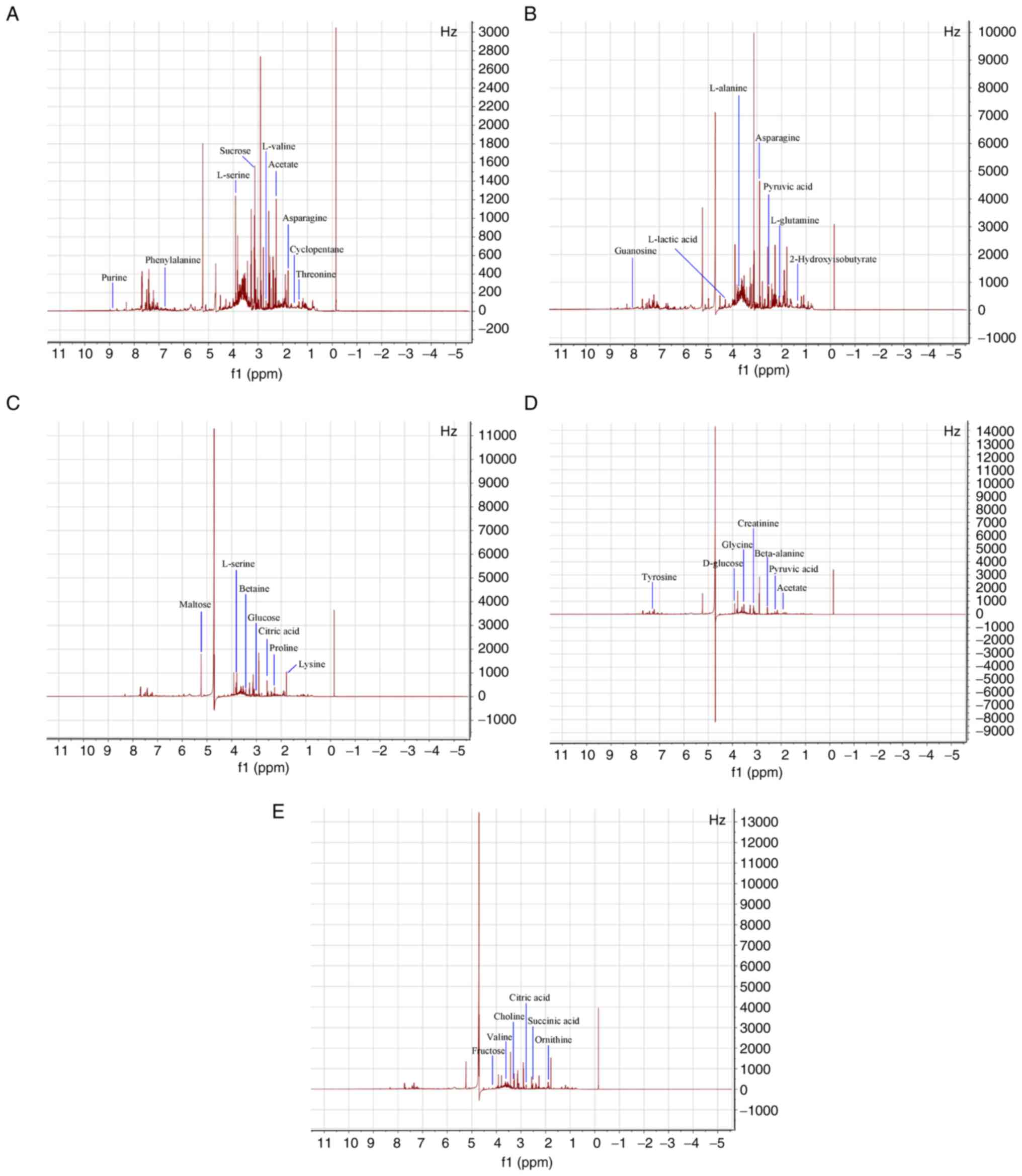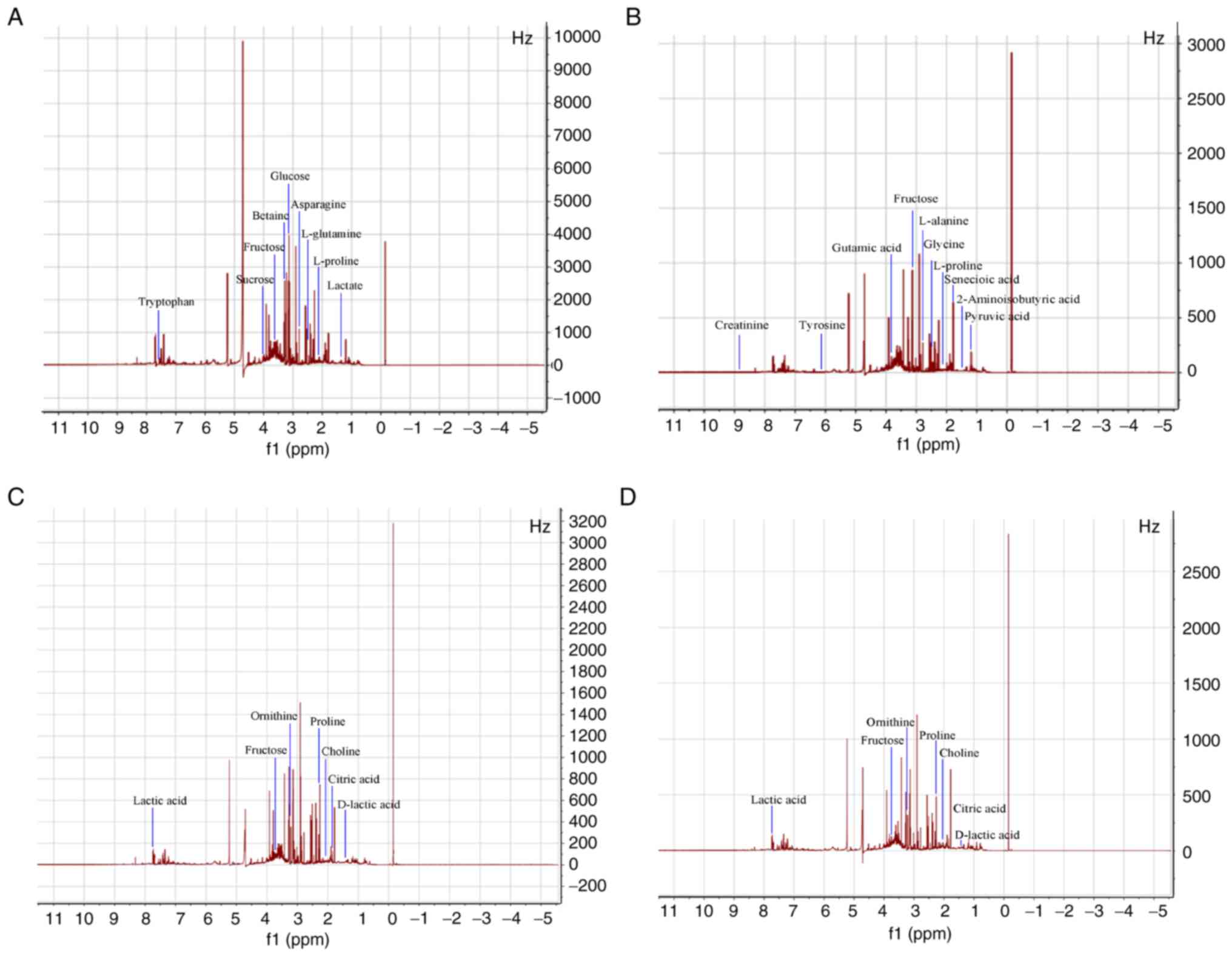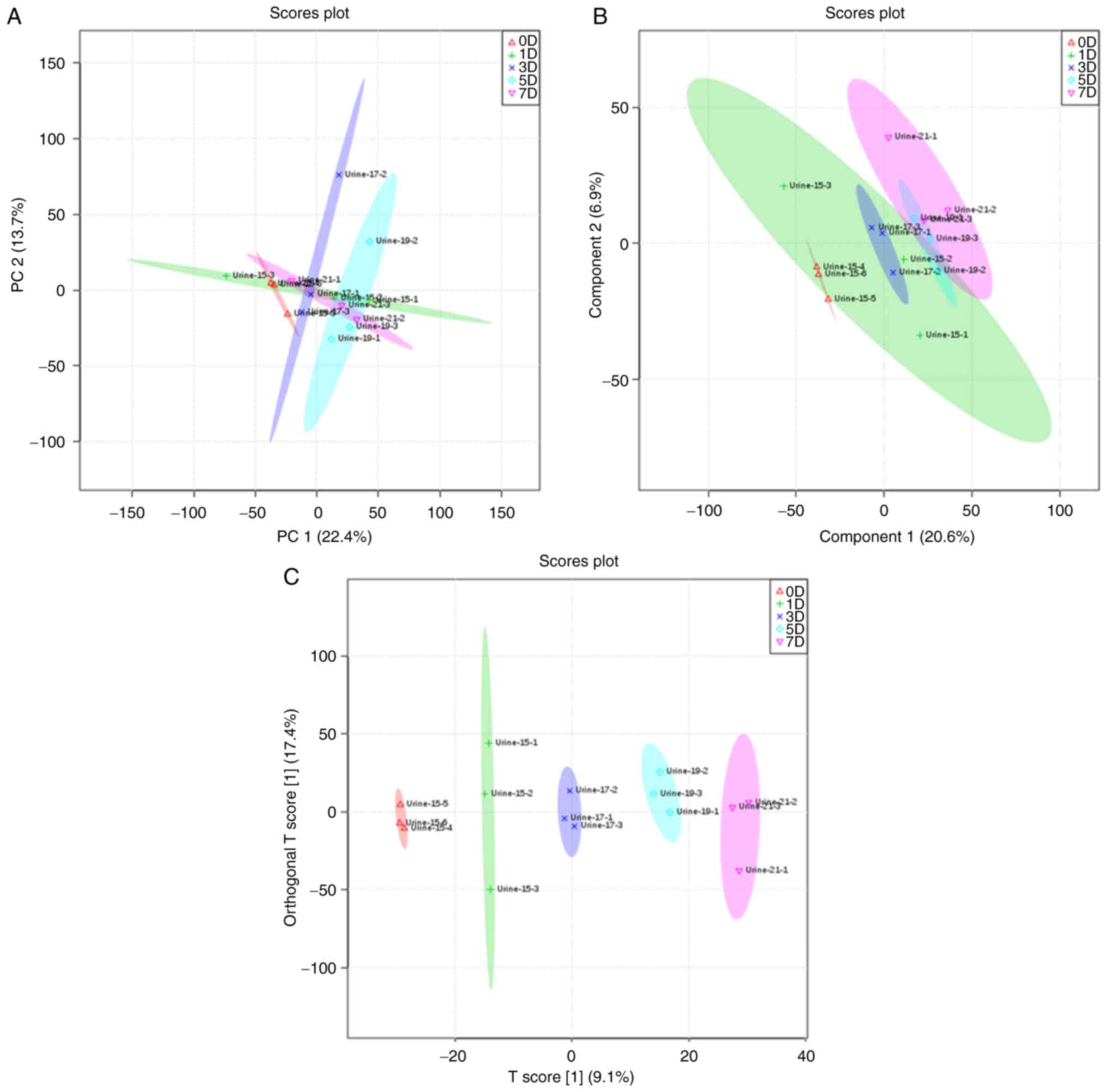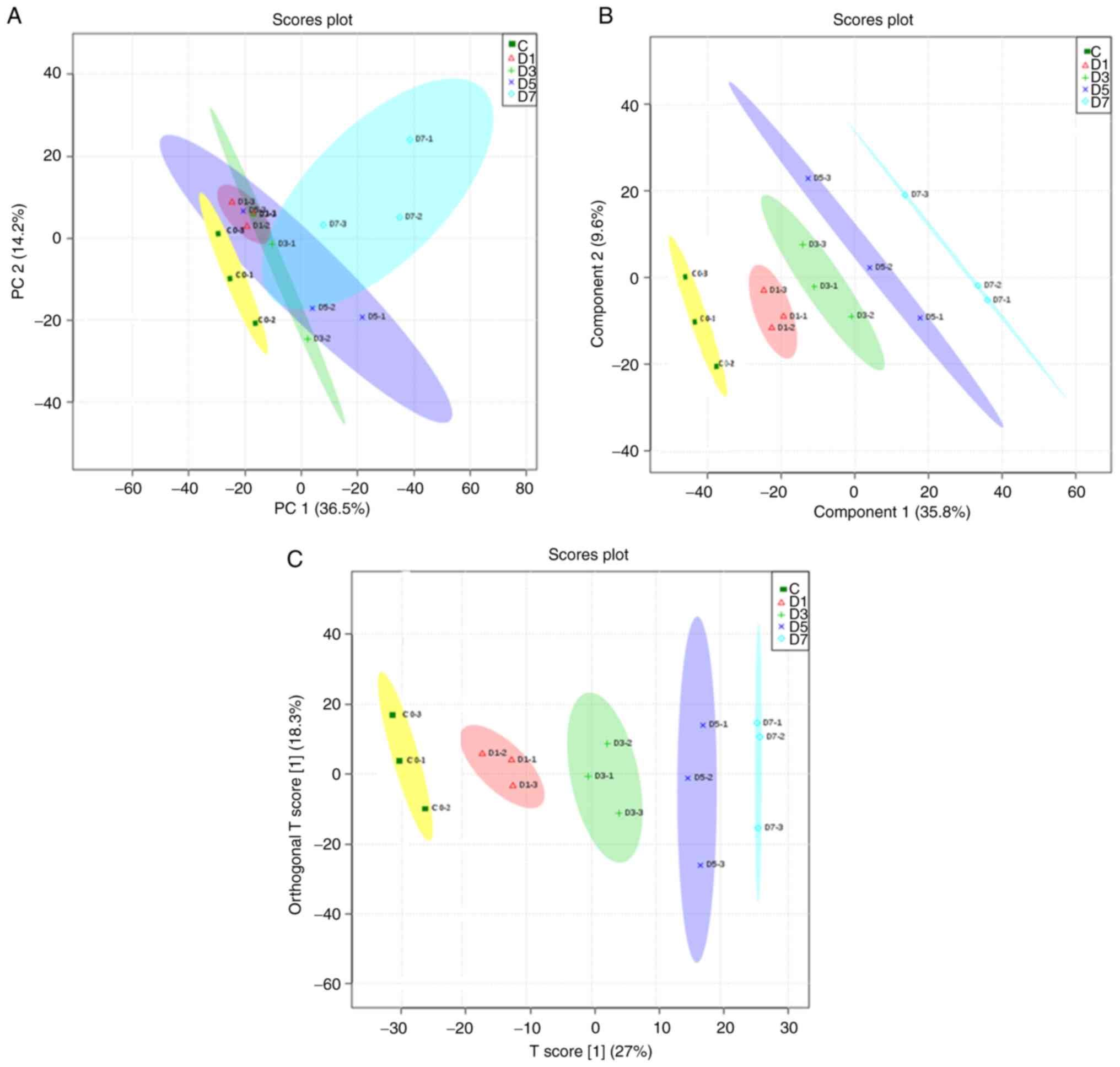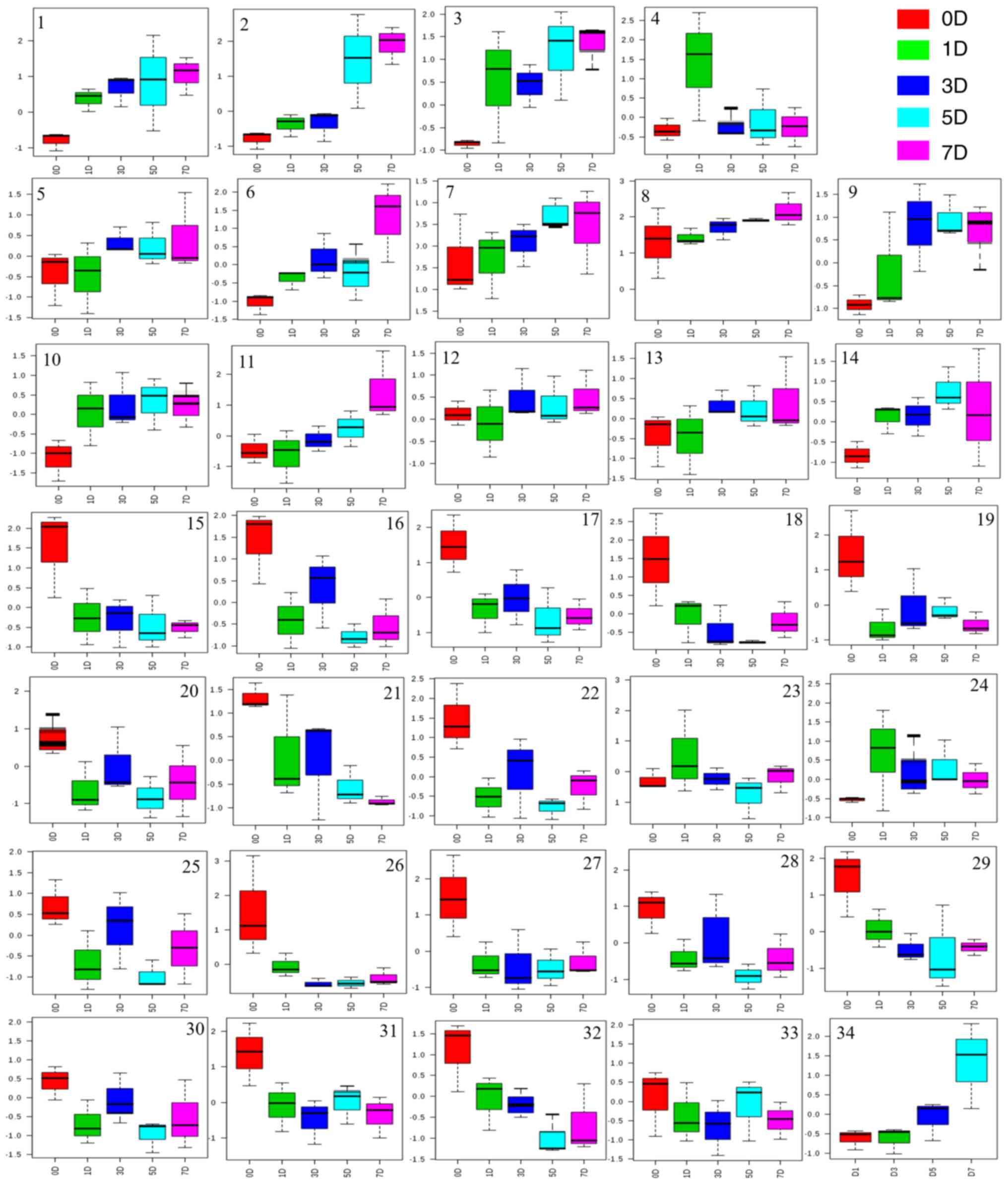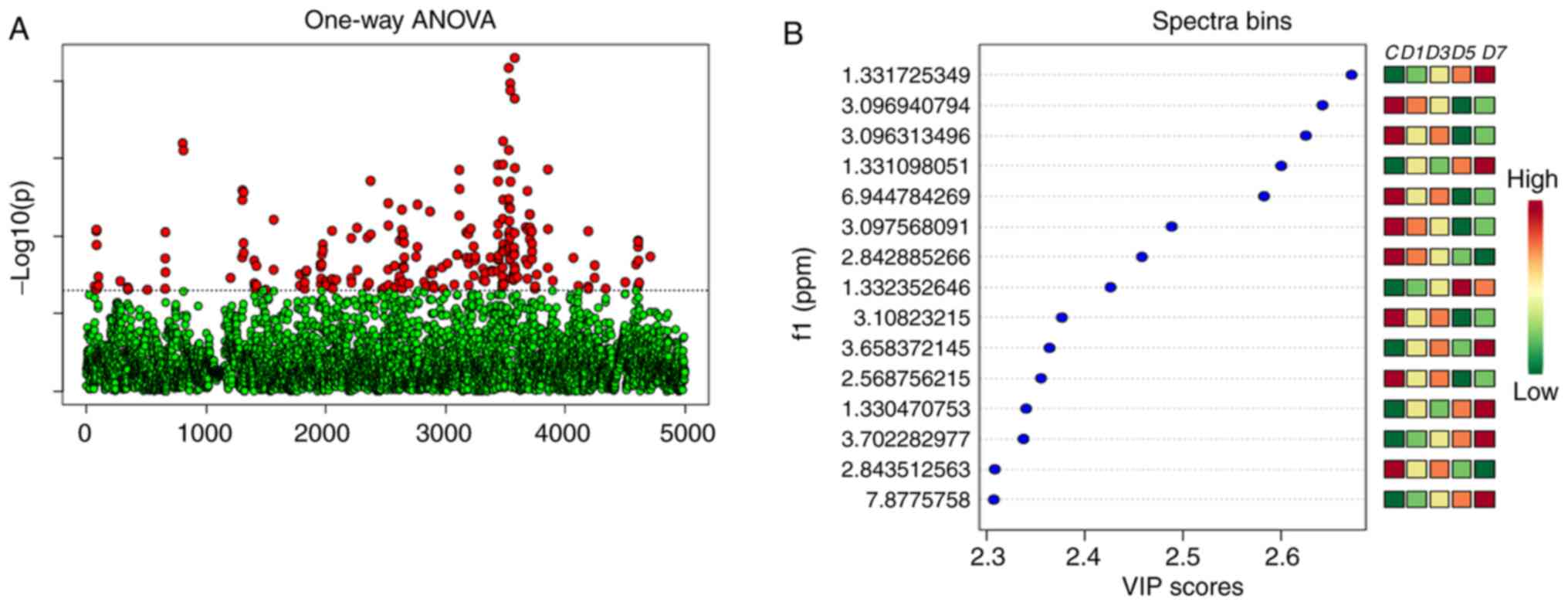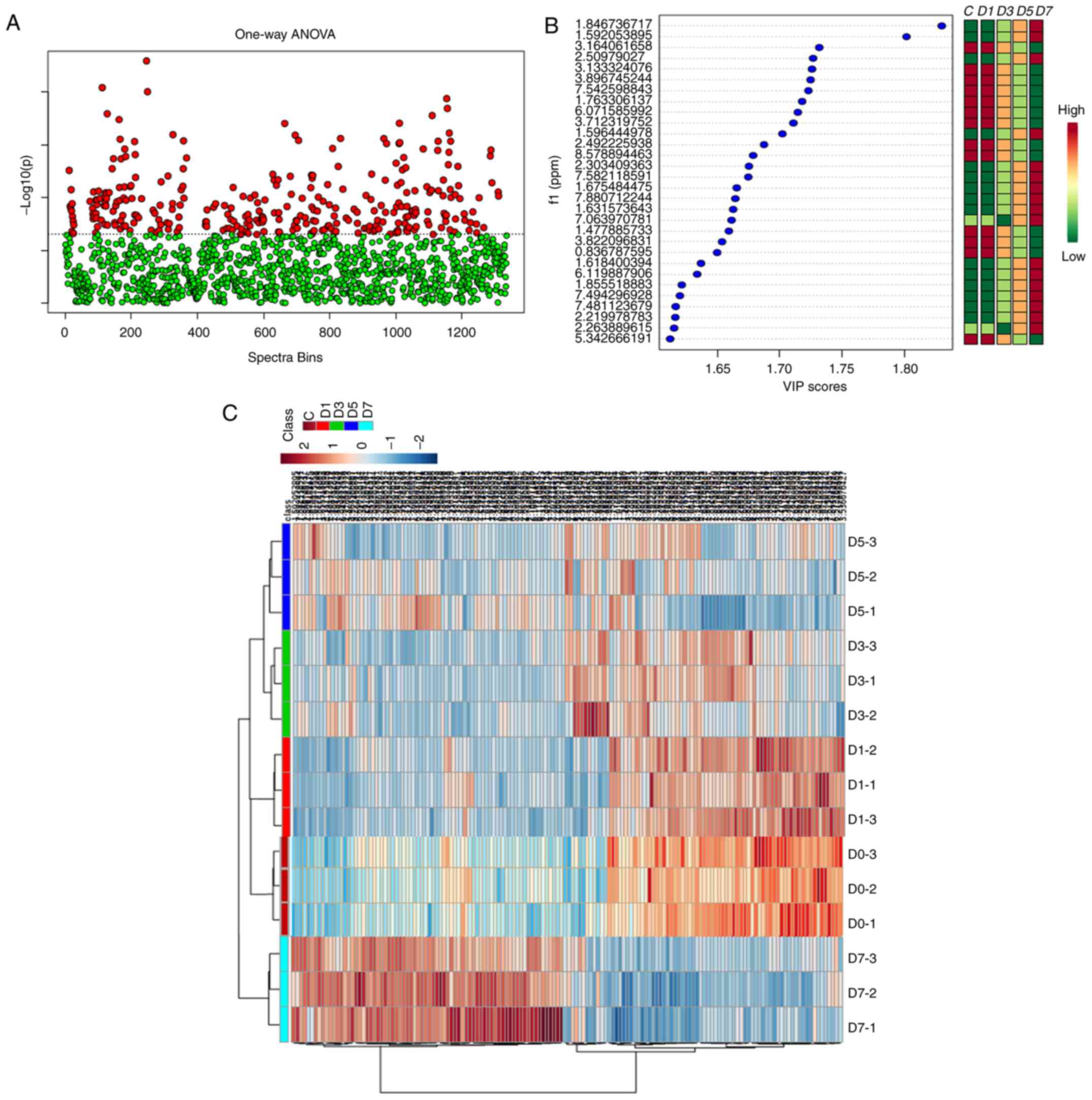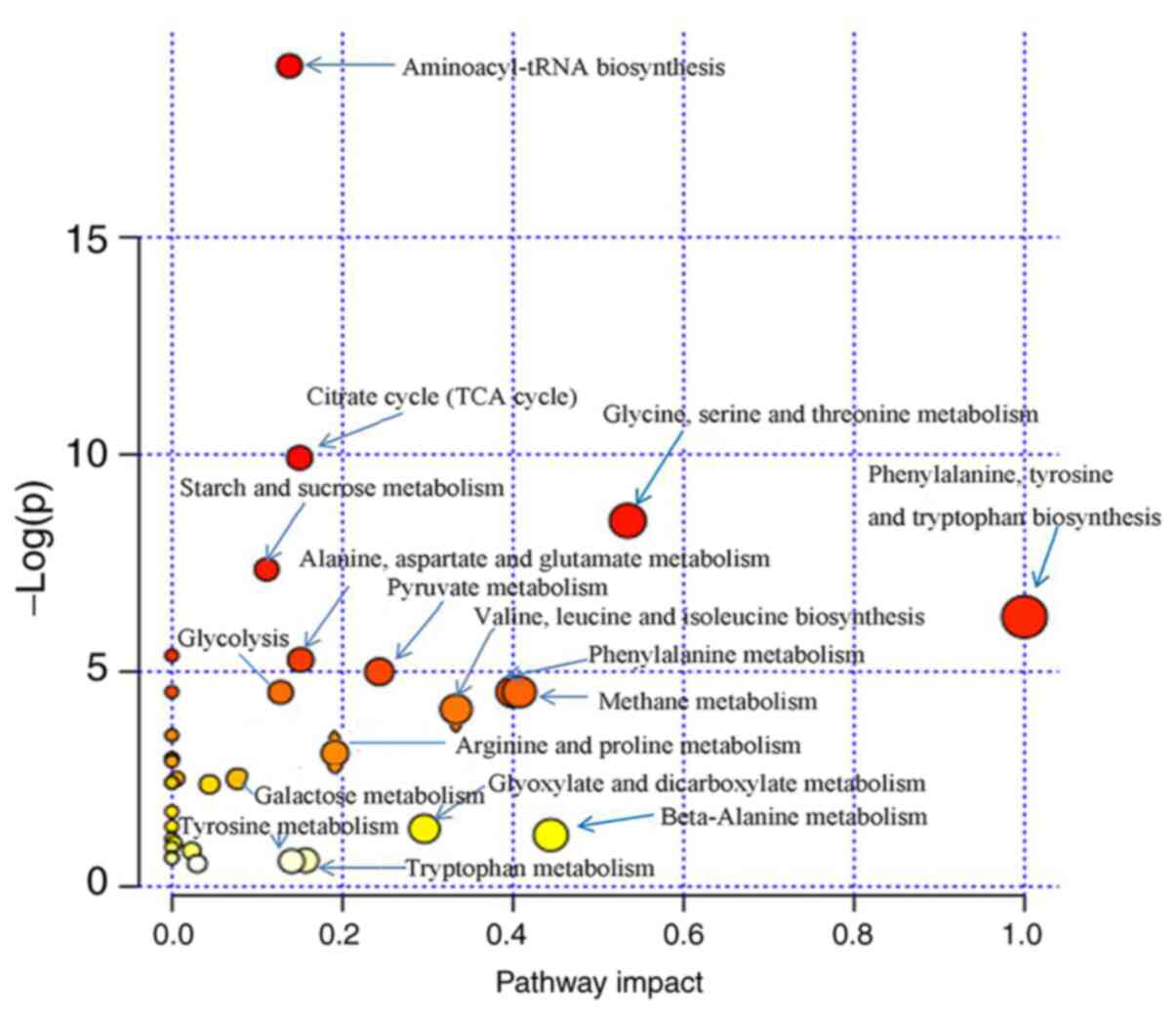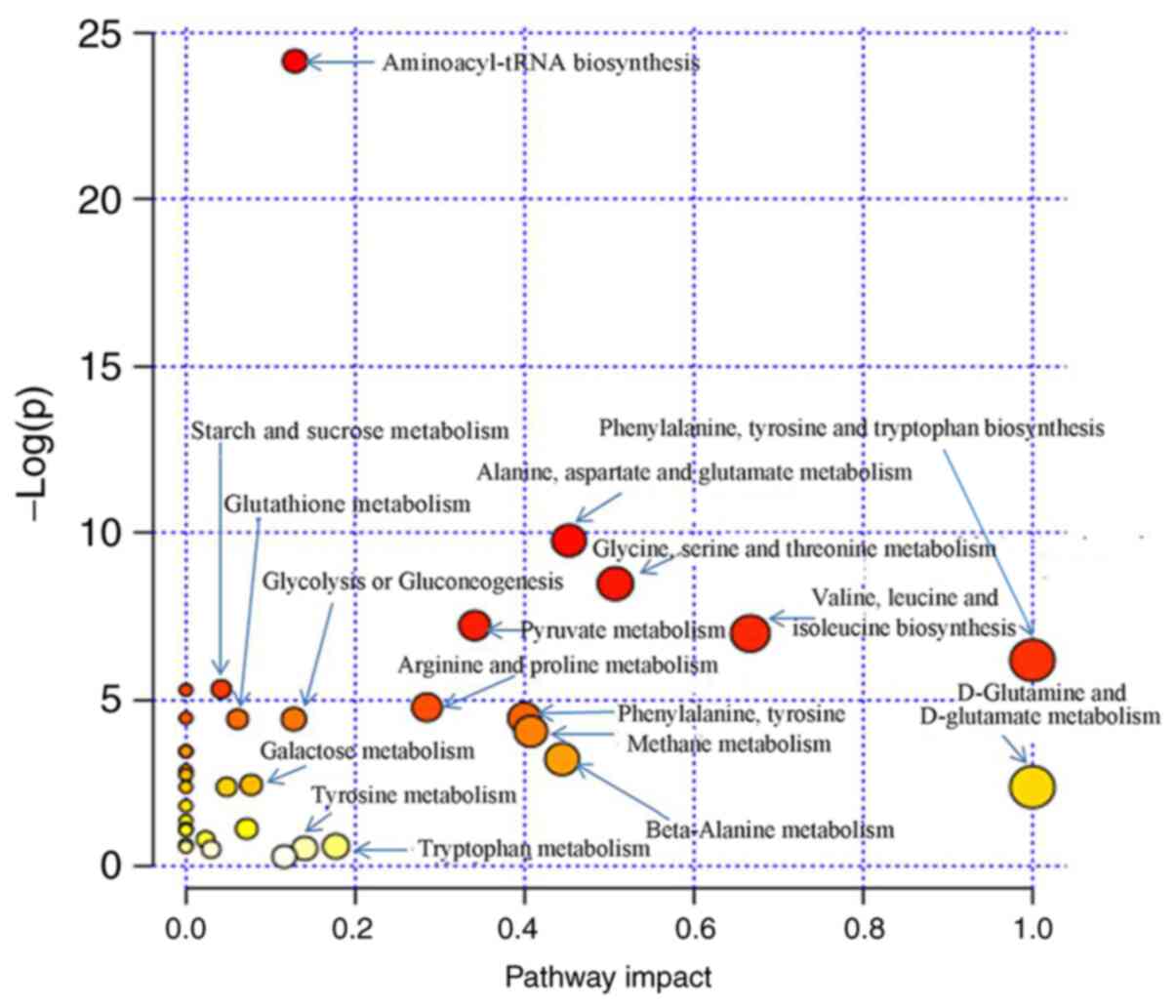|
1
|
Ho WS, Xue JY, Sun SM, Ooi VE and Li YL:
Antiviral activity of daphnoretin isolated from Wikstroemia indica.
Phytother Res. 24:657–661. 2010.PubMed/NCBI View
Article : Google Scholar
|
|
2
|
Zhang QR and Xia GC: Colored illustrated
book of poisonous chinese herbal medicine. Tianjin Science and
Technology Translation Publishing Company. 131:2006.
|
|
3
|
Kato M, He YM, Dibwe DF, Li F, Awale S,
Kadota S and Tezuka Y: New guaian-type sesquiterpene from
Wikstroemia indica. Nat Prod Commun. 9:1–2. 2014.PubMed/NCBI
|
|
4
|
Tong LJ, Sun LX, Sun LX, LU XF and XU CL:
Isolation and structural identification of the chemical
constituents from the rhizomes of Wikstroemia indica. Chin J Med
Chemistry. 25:50–53. 2015.
|
|
5
|
Chang H, Wang YW, Gao X, Song Z, Awale S,
Han N, Liu Z and Yin J: Lignans from the root of Wikstroemia indica
and their cytotoxic activity against PANC-1 human pancreatic cancer
cells. Fitoterapia. 121:31–37. 2017.PubMed/NCBI View Article : Google Scholar
|
|
6
|
Wang GC, Zhang XL, Wang YF, Li GQ, Ye WC
and Li YL: Four new dilignans from the roots of Wikstroemia indica.
Chem Pharm Bull (Tokyo). 60:920–923. 2012.PubMed/NCBI View Article : Google Scholar
|
|
7
|
Shao M, Huang XJ, Liu JS, Han WL, Cai HB,
Tang QF and Fan Q: A new cytotoxic biflavonoid from the rhizome of
Wikstroemia indica. Nat Prod Res. 30:1417–1422. 2016.PubMed/NCBI View Article : Google Scholar
|
|
8
|
Huang WH, Zhou GX, Wang GC, Chung HY, Ye
WC and Li YL: A new biflavonoid with antiviral activity from the
roots of Wikstroemia indica. J Asian Nat Prod Res. 14:401–406.
2012.PubMed/NCBI View Article : Google Scholar
|
|
9
|
Li J, Lu LY, Zeng LH, Zhang C, Hu JL and
Li XR: A new C-3/C-3'-biflavanone from the roots of Wikstroemia
indica. Molecules. 17:7792–7797. 2012.PubMed/NCBI View Article : Google Scholar
|
|
10
|
Shao M, Huang XJ, Sun XG, Wang Y, Yang Y,
Wang QR, Fan Q and Ye WC: Phenolic constituents from rhizome of
Wikstroemia indica and their anti-tumor activity. Nat Prod Res Dev.
26:851–855. 2014.
|
|
11
|
Guo GM, Li W and Wang Y: Sterol compounds
from Wikstroemia indica (L.) C.A.May. J Mt Agric Biol. 31:77–79.
2012.
|
|
12
|
Guo GM, Wang Y, Li W and Hao XJ: Study on
the chemical constituents from the light petroleum extracts of
Wikstroemia indica. Sci Technol Eng. 14:188–190. 2014.
|
|
13
|
Chen C, Qu F, Wang J, Xia X, Wang J, Chen
Z, Ma X, Wei S, Zhang Y, Li JY, et al: Antibacterial effects of
different extracts from Wikstroemia indica on Escherichiacoli based
on microcalorimetry coupled with agar dilution method. J Therm Anal
Calorim. 123:1583–1590. 2016.
|
|
14
|
Lu CL, Zhu L, Piao JH and Jiang JG:
Chemical compositions extracted from Wikstroemia indica and their
multiple activities. Pharm Biol. 50:225–231. 2012.PubMed/NCBI View Article : Google Scholar
|
|
15
|
Ho WS, Li YL, Sun SS, Ooi VE and Xue JY:
Antiviral activity of daphnoretin isolated from Wikstroemia indica.
Phytother Res. 24:657–661. 2010.PubMed/NCBI View
Article : Google Scholar
|
|
16
|
Yang ZY, Kan JT, Cheng ZY, Wang XL, Zhu YZ
and Guo W: Daphnoretin-induced apoptosis in HeLa cells: A possible
mitochondria-dependent pathway. Cytotechnology. 66:51–61.
2014.PubMed/NCBI View Article : Google Scholar
|
|
17
|
Jiang HF, Wu Z, Bai X, Zhang Y and He P:
Effect of daphnoretin on the proliferation and apoptosis of A549
lung cancer cells in vitro. Oncol Lett. 8:1139–1142.
2014.PubMed/NCBI View Article : Google Scholar
|
|
18
|
Liu MX, Chen YG, Luo J, Wang JL, Sun H and
Chen J: One case of severe erythema multiform drug eruption
accompanied by drug-induced liver injury induced by wikstroemiae
indicae radix tablets. Chin J Pharmacovigilance. 15:314–315, 317.
2018.
|
|
19
|
National Pharmacopoeia Committee:
Pharmacopoeia of People's Republic of China. Part 1. People's
Health Publishing House, Beijing, p16, 1978.
|
|
20
|
Feng G, Li W, He X, Li ZQ, Wang JK, Zheng
CQ, Tian XF and Leng AB: Effects of different extracts of Miao
medicine Wikstroemia indica root on hepatotoxicity in normal rats.
Chinese J Exp Traditional Med Formulae. 23:96–102. 2017.
|
|
21
|
National Pharmacopoeia Commission:
Pharmacopoeia of the People's Republic of China. Part 1. China
Medical Science and Technology Press, Beijing, p248, 2015.
|
|
22
|
Wang JK, Li W, Guo JM, Gao YM, Zhang LY
and Yang R: Influence of different processing methods on the total
flavonoids content of Wikstroemia indica. J Guiyang Coll
Traditional Chin Med. 33:17–19. 2011.
|
|
23
|
Shen MF, Li W, Wang JK, Lin C, Guo JM,
Yang CF and Yang Y: The content of daphnoretin in different
medicinal parts of Wikstroemia indica was determined by HPLC. J Med
Pharm Chin Minorities. 18:65–67. 2012.
|
|
24
|
Zhang JJ, Xiong Y, Li W, Wang JK, Lin C,
Wu N and Yang Q: Comparison of antibacterial and anti-inflammatory
effect of unprocessed and processed products of indian stringbush
root. Lishizhen Med Materia Med Res. 26:1118–1120. 2015.
|
|
25
|
Feng G, Li W, He X, Zheng C, Leng A and
Tian X: Comparison of acute toxicity effects of ethanol extract
from different processed products of Miao Medi-cine Wikstroemia
indica on mice. China Pharmacy. 28:3536–3540. 2017.
|
|
26
|
Zhang J, Li W, Wang J, Lin C and Liu Y:
Comparison of acute toxicity of extract of unprocessed indian
atringbush root and its two different processed products. Zhongguo
Zhong Yao Za Zhi. 36:1172–1174. 2011.PubMed/NCBI(In Chinese).
|
|
27
|
Feng G, Chen YL, Li W, Li LL, Wu ZG, Wu
ZJ, Hai Y, Zhang SC, Zheng CQ, Liu CX and He X: Exploring the
Q-marker of ‘sweat soaking method’ processed radix Wikstroemia
indica: Based on the ‘effect-toxicity-chemicals’ study.
Phytomedicine. 45:49–58. 2018.PubMed/NCBI View Article : Google Scholar
|
|
28
|
Zhang Z, Wang X, Wang J, Jia Z, Liu Y, Xie
X, Wang C and Jia W: Metabonomics approach to assessing the
metabolism variation and endoexogenous metabolic interaction of
ginsenosides in cold stress rats. J Proteome Res. 15:1842–1852.
2016.PubMed/NCBI View Article : Google Scholar
|
|
29
|
Kanehisa M, Araki M, Goto S, Hattori M,
Hirakawa M, Itoh M, Katayama T, Kawashima S, Okuda S, Tokimatsu T
and Yamanishi Y: KEGG for linking genomes to life and the
environment. Nucleic Acids Res. 36:D480–D484. 2008.PubMed/NCBI View Article : Google Scholar
|
|
30
|
West TP: Pyrimidine bases catabolism in
Pseudomonas putida biotype B. Antonie Van Leeuwenhoek. 80:163–167.
2001.PubMed/NCBI View Article : Google Scholar
|
|
31
|
Guo PP, Wang J, Dong G, Wei D, Li M, Yang
M and Kong L: NMR-based metabolomics approach to study the chronic
toxicity of crude ricin from castor bean kernels on rats. Mol
Biosyst. 10:2426–2440. 2014.PubMed/NCBI View Article : Google Scholar
|
|
32
|
Araujo TT, Barbosa Silva Pereira HA,
Dionizio A, Sanchez CD, de Souza Carvalho T, de Silva Fernandes M
and Rabelo Buzalaf MA: Changes in energy metabolism induced by
fluoride: Insights from inside the mitochondria. Chemosphere.
236(124357)2019.PubMed/NCBI View Article : Google Scholar
|
|
33
|
Xu F, Liu Y, Zhao H, Yu K, Song M, Zhu Y
and Li Y: Aluminum chloride caused liver dysfunction and
mitochondrial energy metabolism disorder in rat. J Inorg Biochem.
174:55–62. 2017.PubMed/NCBI View Article : Google Scholar
|
|
34
|
Venediktova NI, Mashchenko OV, Talanov EY,
Belosludtseva NV and Mironova GD: Energy metabolism and oxidative
status of rat liver mitochondria in conditions of experimentally
induced hyperthyroidism. Mitochondrion. 52:190–196. 2020.PubMed/NCBI View Article : Google Scholar
|
|
35
|
Buckalew VM Jr: Nephrolithiasis in renal
tubular acidosis. J Urol. 141:731–737. 1989.PubMed/NCBI View Article : Google Scholar
|
|
36
|
Zhang H, Chen Y, Li Y and Wang T:
Protective effect of polydatin on jejunal mucosal integrity, redox
status, inflammatory response, and mitochondrial function in
intrauterine growth-retarded weanling piglets. Oxid Med Cell
Longev. 7178123:2020.PubMed/NCBI View Article : Google Scholar
|
|
37
|
Tasci I, Mas N, Mas MR, Tuncer M and
Comert B: Ultrastructural changes in hepatocytes after taurine
treatment in CCl4 induced liver injury. World J
Gastroenterol. 14:4897–4902. 2008.PubMed/NCBI View Article : Google Scholar
|
|
38
|
Romano TG, Schmidtbauer I, Silva FM,
Pompilio CE, D'Albuquerque LA and Macedo E: Role of MELD score and
serum creatinine as prognostic tools for the development of acute
kidney injury after liver transplantation. PLoS One.
8(e64089)2013.PubMed/NCBI View Article : Google Scholar
|
|
39
|
Gartland KP, Bonner FW, Timbrell JA and
Nicholson JK: Biochemical characterisation of
para-aminophenol-induced nephrotoxic lesions in the F344 rat. Arch
Toxicol. 63:97–106. 1989.PubMed/NCBI View Article : Google Scholar
|
|
40
|
Holmes E, Nicholson JK, Nicholls AW,
Lindon JC, Connor SC, Polley S and Connelly J: The identification
of novel biomarkers of renal toxicity using automatic data
reduction techniques and PCA of proton NMR spectra of urine.
Chemometr Intell Lab Syst. 44:245–255. 1998.
|
|
41
|
Buchman AL: The addition of choline to
parenteral nutrition. Gastroenterology. 137:119–128.
2009.PubMed/NCBI View Article : Google Scholar
|
|
42
|
Griffin JL, Mann CJ, Scott J, Shoulders CC
and Nicholson JK: Choline containing metabolites during cell
transfection: An insight into magnetic resonance spectroscopy
detectable changes. FEBS Lett. 509:263–266. 2001.PubMed/NCBI View Article : Google Scholar
|
|
43
|
Oliveira DT, Chaves-Filho AB, Yoshinaga
MY, Paiva NC, Carneiro CM, Miyamoto S, Festuccia WT and Guerra-Sá
R: Liver lipidome signature and metabolic pathways in nonalcoholic
fatty liver disease induced by a high-sugar diet. J Nut
Biochemistry. 87(108519)2021.PubMed/NCBI View Article : Google Scholar
|















